
Heinrich Hermann Robert Koch was a German physician and microbiologist. As the discoverer of the specific causative agents of deadly infectious diseases including tuberculosis,cholera and anthrax,he is regarded as one of the main founders of modern bacteriology. As such he is popularly nicknamed the father of microbiology,and as the father of medical bacteriology. His discovery of the anthrax bacterium in 1876 is considered as the birth of modern bacteriology. Koch used his discoveries to establish that germs "could cause a specific disease" and directly provided proofs for the germ theory of diseases,therefore creating the scientific basis of public health,saving millions of lives. For his life's work Koch is seen as one of the founders of modern medicine.
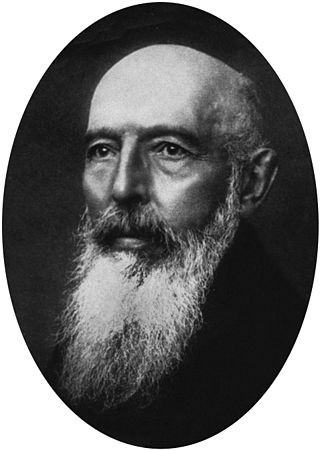
Gerhard Henrik Armauer Hansen was a Norwegian physician,remembered for his identification of the bacterium Mycobacterium leprae in 1873 as the causative agent of leprosy. His distinguished work was recognized at the International Leprosy Congress held at Bergen in 1909.
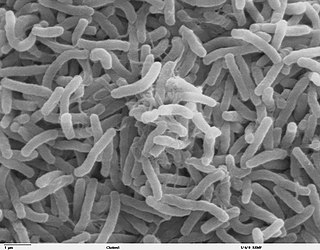
Vibrio cholerae is a species of Gram-negative,facultative anaerobe and comma-shaped bacteria. The bacteria naturally live in brackish or saltwater where they attach themselves easily to the chitin-containing shells of crabs,shrimp,and other shellfish. Some strains of V. cholerae are pathogenic to humans and cause a deadly disease called cholera,which can be derived from the consumption of undercooked or raw marine life species or drinking contaminated water.

Charles Louis Alphonse Laveran was a French physician who won the Nobel Prize in Physiology or Medicine in 1907 for his discoveries of parasitic protozoans as causative agents of infectious diseases such as malaria and trypanosomiasis. Following his father,Louis Théodore Laveran,he took up military medicine as his profession. He obtained his medical degree from University of Strasbourg in 1867.

Victor Babeș was a Romanian physician,bacteriologist,academician and professor. One of the founders of modern microbiology,Victor Babeșis author of one of the first treatises of bacteriology in the world –Bacteria and their role in pathological anatomy and histology of infectious diseases,written in collaboration with French scientist Victor AndréCornil in 1885. In 1888,Babeșunderlies the principle of passive immunity,and a few years later enunciates the principle of antibiosis. He made early and significant contributions to the study of rabies,leprosy,diphtheria,tuberculosis and other infectious diseases. He also discovered more than 50 unknown germs and foresaw new methods of staining bacteria and fungi. Victor Babeșintroduced rabies vaccination and founded serotherapy in Romania.

Alexandre Emile Jean Yersin was a Swiss-French physician and bacteriologist. He is remembered as the co-discoverer of the bacillus responsible for the bubonic plague or pest,which was later named in his honour:Yersinia pestis. Another bacteriologist,the Japanese physician Kitasato Shibasaburō,is often credited with independently identifying the bacterium a few days earlier. Yersin also demonstrated for the first time that the same bacillus was present in the rodent as well as in the human disease,thus underlining the possible means of transmission.

Brigadier General George Miller Sternberg was a U.S. Army physician who is considered the first American bacteriologist,having written Manual of Bacteriology (1892). After he survived typhoid and yellow fever,Sternberg documented the cause of malaria (1881),discovered the cause of lobar pneumonia (1881),and confirmed the roles of the bacilli of tuberculosis and typhoid fever (1886).
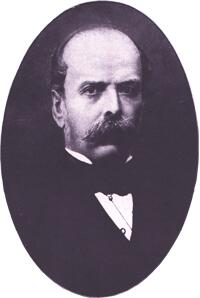
Filippo Pacini was an Italian anatomist,posthumously famous for isolating the cholera bacterium Vibrio cholerae in 1854,well before Robert Koch's more widely accepted discoveries 30 years later.

Theodor Albrecht Edwin Klebs was a German-Swiss microbiologist. He is mainly known for his work on infectious diseases. His works paved the way for the beginning of modern bacteriology,and inspired Louis Pasteur and Robert Koch. He was the first to identify a bacterium that causes diphtheria,which was called Klebs–Loeffler bacterium. He was the father of physician Arnold Klebs.
Carl Friedländer was a German pathologist and microbiologist who helped discover the bacterial cause of pneumonia in 1882. He also first described thromboangiitis obliterans.

Karl Weigert,Carl Weigert was a German Jewish pathologist. His nephew was Fritz Weigert and his cousin was Paul Ehrlich.

Richard Friedrich Johannes Pfeiffer FRS was a German physician and bacteriologist. Pfeiffer was born to Otto Pfeiffer,a German pastor of the local Evangelical parish,and Natalia née Jüttner,in Treustädt,Province of Posen (Prussia),and died in Bad Landeck.

Amico Bignami was an Italian physician,pathologist,malariologist and sceptic. He was professor of pathology at Sapienza University of Rome. His most important scientific contribution was in the discovery of transmission of human malarial parasite in the mosquito.

Angelo Celli was an Italian physician,hygienist,parasitologist and philanthropist known for his pioneering work on the malarial parasite and control of malaria. He was Professor of Hygiene at the University of Palermo,and then at the Sapienza University of Rome. He founded the Pasteur Institute of Italy. With his wife Anna Fraentzel he established a number of medical schools in the Roman Campagna and dispensaries in Rome. He and Ettore Marchiafava correctly described the protozoan parasite that caused malaria and gave it the scientific name Plasmodium in 1885. Understanding the nature of malaria,he was among the first scientists to advocate and work for eradication of insects to prevent infectious diseases. He was elected to the Senate of the Kingdom of Italy in 1892.
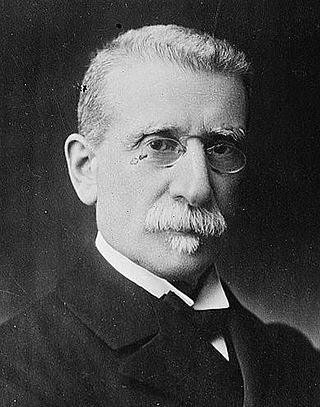
Ettore Marchiafava was an Italian physician,pathologist and neurologist. He spent most of his career as professor of medicine at the University of Rome. His works on malaria laid down the foundation for modern malariology. He and Angelo Celli were the first to elucidate living malarial parasites in human blood,and able to distinguish the protozoan parasites responsible for tertian and benign malaria. In 1885 they gave the formal scientific name Plasmodium for these parasites. They also discovered meningococcus as the causative agent of cerebral and spinal meningitis. Marchiafava was the first to describe syphilitic cerebral arteritis and degeneration of brain in an alcoholic patient,which is now eponymously named Marchiafava's disease. He gave a complete description of a genetic disease of blood now known Paroxysmal nocturnal hemoglobinuria or sometimes Strübing-Marchiafava-Micheli syndrome,in honour of the pioneer scientists. He was personal physician to three successive popes and also to House of Savoy. In 1913 he was elected to Senate of the Kingdom of Italy. He founded the first Italian anti-tuberculosis sanatorium at Rome. He was elected member of the Accademia dei Lincei,becoming its vice-president in 1933.
The history of pathology can be traced to the earliest application of the scientific method to the field of medicine,a development which occurred in the Middle East during the Islamic Golden Age and in Western Europe during the Italian Renaissance.
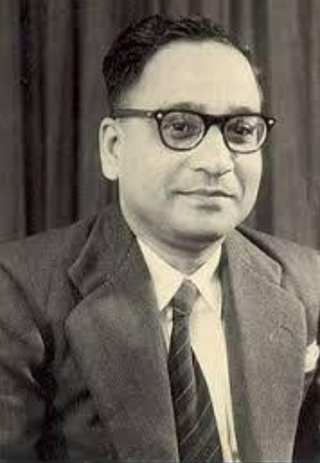
Sambhunath De;was an Indian medical scientist and researcher,who discovered the cholera toxin,the animal model of cholera,and successfully demonstrated the method of transmission of cholera pathogen Vibrio cholerae.

Karl Friedrich Meyer was an American scientist of Swiss origin. He was one of the most prodigious scientists in many areas of infectious diseases in man and animals,the ecology of pathogens,epidemiology and public health.[1-6] Some called him the “Pasteur of the 20th century”.

William George MacCallum was a Canadian-American physician and pathologist. He was of Scottish descent and was born in Dunnville village in Canada,where his father was a physician. He was educated at the University of Toronto. He graduated with BA in 1894. Initially inclined towards Greeks as academic career,his father influenced him to enter medicine. He joined the second year of the first batch of medicine course in the Johns Hopkins Medical School,and became one of the first graduates of the institute in 1897. He was appointed assistant resident of pathology of the medical school in 1897,resident pathologist in 1901,soon after Associate Professor,and full Professor in 1908. Between 1909 and 1917 he held a twin position of Professor of Pathology at Columbia University and the NewYork–Presbyterian Hospital. From 1917 to 1943 he held the Chair of Pathogy at Johns Hopkins University.

Giuseppe Sanarelli was an Italian bacteriologist who incorrectly identified the cause of yellow fever as a bacterium. It was however found later by Walter Reed that the bacterium Bacillus icterioides was a secondary infection. In 1897 he triggered the first major public debate on medical ethics when he injected yellow fever bacteria into five patients without consent,three of whom died. He also served as a senator of the Kingdom of Italy from 1920 to 1940.


















